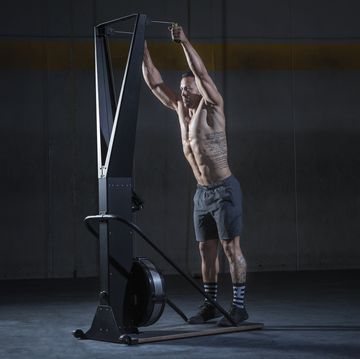This is Your Quick Training Tip, a chance to learn how to work smarter in just a few moments so you can get right to your workout.
Whether you’ve been lifting for a day or a decade (or even longer), if you’ve spent any time in the weight room, you know that some parts of any given exercise are more difficult than others. The bottom of a bench press, the top position of a row, the middle of a biceps curl—every movement has a struggle zone—that's a non-technical term—that makes just about every other part feel easy by comparison. But the most successful lifters don’t just recognize that; they use it to their advantage to maximize their gains.
Trainers and exercise scientists refer to the varying points of difficulty during each rep of an exercise as a “strength curve.” If you want to impress your more math-inclined training buddies, you can also explain that the term refers to the graphical representation of the amount of force required at each joint angle in an exercise’s range of motion, and that there are three types of curves: ascending, descending, and bell-shaped.
The bench press and squat are examples of exercises with an ascending strength curve—they feel the hardest at the bottom of the movement (i.e., full flexion) and easiest at the top (full extension). Exercises with a descending strength curve (e.g., row, chinup) flip the script; they’re hardest at the top of the movement and easiest at the bottom. Exercises with a bell curve (e.g., biceps curl) are easiest at the endpoints and most challenging in the middle.
But if you really want to optimize your training, you’ll focus not only on the point where an exercise is the most difficult, but also on the points where it isn’t.
Your move: Eliminate the easy points. There are a couple of ways to do that.
The first is to superset or triset exercises that target a muscle with different strength curves. For the biceps, that might encompass the classic curl (bell-shaped), the preacher curl (ascending), and the spider curl (descending).
Another way is to integrate variable resistance training into your program, using bands or chains to maintain constant tension on a muscle throughout each rep. No matter which method you use, the outcome is the same: More time under tension, and greater strength and muscle gains as a result.

Trevor Thieme is a Los Angeles-based writer and strength coach, and a former fitness editor at Men’s Health. When not helping others get in shape, he splits his time between surfing, skiing, hiking, mountain biking, and trying to keep up with his seven year-old daughter.












